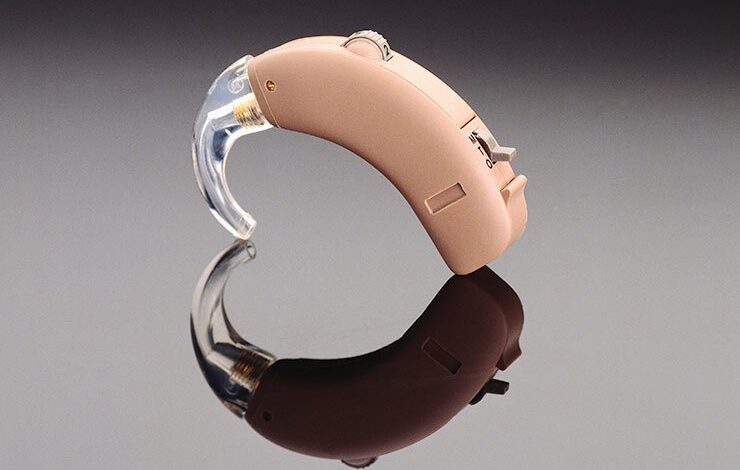Buying a Hearing Aid: The Average Prices Explained

Did you know that nearly 30 million US adults have trouble hearing? However, only about 20% of people with hearing problems decide to buy a hearing aid.
For some, hearing aid prices keep them from making a buy. But there are different types of hearing aids to consider for budgets of all kinds.
The following guide will explain hearing aid cost factors and average prices. Read on to find the perfect affordable hearing loss solution.
Over-the-Counter Options
Until recently, there weren’t over-the-counter options for hearing aids in the US. But in August 2022, the FDA created a new category allowing everyone access to OTC hearing aids.
That means you can get a hearing aid without taking an exam, having a prescription, or having a fitting with a hearing specialist. The added convenience should encourage more people to get the devices they need to improve their lives.
Helpful changes made by the FDA also lowered the cost of top hearing aids on the market. Now, customers can find a quality pair of hearing aids for less than $1,000.
However, it’s important to note that the FDA’s OTC category only applies to specific air-conduction models of hearing devices. They’re designed for adults with moderate hearing loss.
For those that don’t fit the specific conditions, they’ll still need prescription hearing aids. Examples include hearing aids for kids and people with severe hearing loss.
Keep in mind that personal sound amplification devices aren’t the same as hearing aids. They’re for people with normal hearing and don’t require a prescription.
Buying a Hearing Aid
Depending on the technology and features, the average price for a hearing aid is typically somewhere between $2,000 a$3,000ars. As mentioned earlier, the lowest amount you can expect to spend is around $1,000.
As more time passes, technology tends to get less expensive and hearing aids are no different. Device prices usually stay consistent, but what used to be cutting-edge tech is now standard for hearing aids.
Manufacturers of hearing aids aim to deliver devices that fulfill the demands of customers and their finances. That’s why almost every product line has several levels of features and price ranges.
The most state-of-the-art levels often include all the latest features such as improved noise reduction functions and wireless capabilities. Lower-level options usually include less advanced features and so they cost less.
Online Purchases
Keep in mind that going with the cheapest devices online might not be a great idea even if you only have mild hearing issues. Also, remember that personal sound amplification products aren’t a solution for more complex hearing issues.
PSAPs have cheap prices but they amplify all sounds instead of the specific ones you want to hear. Hearing aids get professionally calibrated to meet specific hearing needs.
Special hearing aids can also help with other problems you might want to manage, such as tinnitus. Clinics often pre-program hearing devices to change settings to match certain atmospheres.
Not all online hearing aid stores offer those kinds of personal adjustments which is one reason why they end up with cheaper prices. Ordering online usually means you can’t bundle services such as device refinements or cleanings.
Financial Assistance
Most US citizens use some type of third-party payment method to help them handle the costs of hearing devices. Always take the time to check your insurance benefits before paying out of pocket for a hearing aid.
Most insurance plans that include hearing devices only cover a portion of the expenses annually. If you’re a veteran, you should check with the VA to see if you’re eligible for aid.
The VA generally covers all costs for hearing aids and accessories. They’ll even pay for batteries so you don’t have to worry about running out.
Alternative financing options for hearing aids include low-interest loans and special credit cards. You can also use same-as-cash financing programs to pay for many hearing devices.
Types of Hearing Aids
Behind-the-ear hearing devices keep most of their components housed in a small case that sits behind the ear. The tiny plastic case connects to a mold of the person’s ear or to an earpiece via tubing.
Children often wear this style of hearing aid because it can adjust to a myriad of ear types. That’s important because kids need replacements as they grow. Behind-the-ear models are also simple to clean and have a durable design.
There are smaller behind-the-ear options that use tubes to connect the device to the ear canal. They make a good choice for anyone suffering from the occlusion effect. The uncomfortable effect causes someone to hear their voice too loudly in their head.
In-the-ear hearing devices house all their components in a shell. The shell fills the outer portion of the wearer’s ear. In-the-ear devices have bigger sizes than in-the-canal options, making them easier to handle for some.
In-the-canal hearing devices use very small cases that sit partway or fully in the canal of the ear. It’s the absolute smallest type of hearing aid available today.
Many hearing aid users prefer them because they’re more hidden and give more hearing benefits. Just keep in mind that their small size makes it easier to lose them and harder to adjust them. They also tend to have much higher prices than other hearing devices.
Choosing Affordable Hearing Aids
Now you know what factors to consider when buying a hearing aid. Remember, don’t go with the cheapest option if it means giving up the beneficial features you need. Always review financial aid options for hearing devices and read online reviews of different brands.
Take a look at our health and tech categories for more amazing ways to enhance your well-being.





